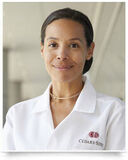Video: “Besides Sternum Wires, What Other Technologies Can Help The Chest Heal?” Asks Jane
By Adam Pick on September 20, 2011
As a follow-up to our recent discussion about chest pain and sternum wires, Jane sent me a great question about incision closure techniques. She writes, “Hi Adam – I’ve read good and bad things about the use of wires to close the sternum. Are there any other technologies used to help the chest heal? Thanks, Jane”
Luckily, I was able to ask this exact question to Dr. Jai Raman, the Chief of Cardiac Surgery at Rush University Medical Center, in Chicago, Illinois. I thought you might like to see the interview highlights from our discussion about a new technology called sternal plating.
Thanks to Jane for her question and a special thanks to Dr. Jai Raman for taking the time to share his clinical experience and research about sternal plating and rigid fixation for open heart surgery patients.
For those members of our community who are hearing impaired, I have provided a written transcript of this video interview below:
Adam: Hi, everybody. It’s Adam and I’m coming to you from AATS in Philadelphia, very excited to be here with Dr. Jai Raman who’s a professor of surgery at the University of Chicago and we’ve got a great question for Dr. Raman and it’s from Jane and she writes, “Adam, I’ve been told that I’ll need heart valve surgery within the next 24 months due to aortic regurgitation. I’ve read good and bad things about the use of wires to close the sternum. Are there any other technologies used to help the chest heal?”
Dr. Raman: So that’s a very good question. Jane, if you can imagine the bone, the breastbone, sets like this and this is what we’ve got to get through to get into your chest to do the surgery. Historically, when cardiac surgery first became a specialty, the bone was lashed together with wire and so pioneering cardiac surgeons in the 50’s and 60’s actually used wire to, you know, circle around the bone and keep it together. Orthopedic surgery, plastic surgery, neurosurgery, they’ve all developed techniques where instead of using wire to go around the bone, we actually use plates and if you can imagine doing carpentry at home over the weekend, you’d never consider lashing two bits of wood together with wire. It’s not very effective if you want it to keep moving all the time. So even technically from carpentry or remodeling, do it stuff at home, you know that when you do a joins, you know, around window frames, you use plates and screws so all other bones in the body are handled with plates and screws. That’s piece of bone in the cheek, bone in your arm, anywhere. So I think that the plate advancement at the the University of Chicago was the plastic surgeons in the mid-90’s told us that this is the best way to close bone, especially in high risk patients. So we adopted this and in the past, maybe eight years, we developed, refined and expanded this to improve it as a standard treatment for closing bone so much of the patients have lots less pain. They’re able to get back on their feet much quicker and it’s also facilitated the ability to do all these small incisions. So if you can imagine, going back to that breastbone and sternum as it sits like this in your chest, these are the plates and screws I was talking about so this plate is screwed in to the bone – The plate, like this, is screwed in to the bone and this makes it really solid so when the bone is doing the bone healing is lack of movement and you can imagine the chest is constantly moving. You’re breathing. You’re coughing. You’re sneezing. All those things hurt like Hell and I’m sure Adam can attest to that.
Adam: The sneezing after heart surgery in particular.
Dr. Raman: Yeah. So when you actually have something that’s fixed surgically, that’s what we call rigid fixation, with plates and screws, that little bit of movement is reduced and so patients actually have a much better chance of healing and healing effectively. So now if you can imagine, let’s take this one step further. The aortic valve sits in this upper portion up here so there’s so there’s no real need for you to go all the way down here. Let’s say we just make a small T-shaped incision (mini-sternotomy) in the bone. It’s so much easier to fix this with plates than with wires because with wires, it’s too – It’s hard for the bone to come together and, you know, align together quickly. Plates and screws, it’s actually facilitated us, our – expanded our ability to do all these complex operations with small incisions. So that is the big benefit of using plates and screws and we do it even for other things. We do it in the side. We can actually make a crack in the rib (mini-thoracotomy), you know. It sounds bad but it actually completely takes away the pain because we fix it at the end with a small plate across the rib. So those are the differences in terms of bone fixation for a patient’s recovery.
Adam: Great. Well, thanks, Dr. Raman, for sharing that with. I hope that helped all you out there. I know I learned a lot and you’ve used this with folks like Danny Thrall, the swimmer, if I remember right.
Dr. Raman: Yes.
Adam: The swimmer. So thanks for all that you do at the University of Chicago and stopping by with us today. We really appreciate it.
Dr. Raman: Thank you.
Adam: Take care.
Keep on tickin!
Adam
|
Fran Zilko says on September 20th, 2011 at 8:16 pm |
|
In retrospect, I most likely would have benefited from this type of closure as I have a “bump” in my sternum where I believe the bones did not heal well with the traditional wiring. Wonder if this will become standard protocol for all sternotomies? |
 |
|
Doris Taylor-Marcus says on September 21st, 2011 at 4:29 am |
|
Thank you for this information. When I visit with the Cardiac Surgeon I will ask him about this. I am still trying to decide if I will have this surgery, but this kind of information certainly is helpful. Thank you again Adam. Doris |
 |
|
laurie d says on September 21st, 2011 at 11:12 am |
|
i had wire stitches put in me after i had a 5 artery by-pass. the stitches did not do the job. i then had titanium plates put in. i just had an x-ray done as i was still haveing problems in my surgery area. the x-ray showed all the old wire stitches were NOT removed. is this a standard proceedure NOT TO REMOVE the broken and frayed wire stitches when putting in titanium plates. thank-you laurie |
 |
|
frank says on September 21st, 2011 at 7:58 pm |
|
I had the aortic valve replaced with a mech valve and an aortic anueysm repaired on 4/28/2010. My chest scar is narrow has not caused any dicomfort. I asked why I had no stitching. My dad had the same operation in the late 80s and he had a railroad type scar. When I asked about the scar, I was told that my chest had been glued. I never questioned this until reading some of these blogs. Did I misunderstand something or is gluing a possibility? |
 |
|
Fran says on September 21st, 2011 at 8:14 pm |
|
Comment to Frank. Like you, I had no sutures, but my incision was glued. The sternum closure is another issue. I could be wrong, but that’s my understanding of it. |
 |
|
nancy rouch says on June 12th, 2017 at 7:18 pm |
|
I really appreciate the explanation of titanium plates since my doctor told me he was going to use them for my upcoming AVR. He told me it was because I have osteoporosis, I had never heard of them nor knew it was done routinely at some facilities. Ever way, I hope I am better off with the plates in the long run. |
 |











